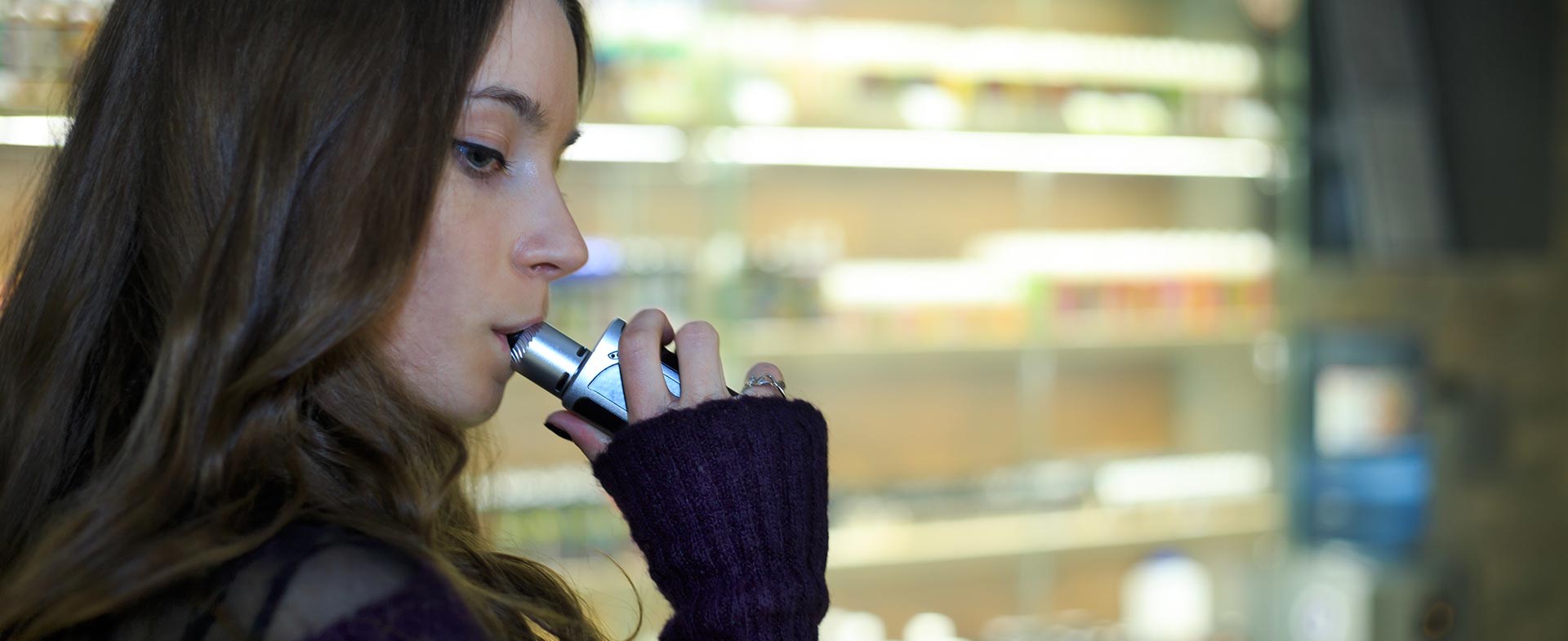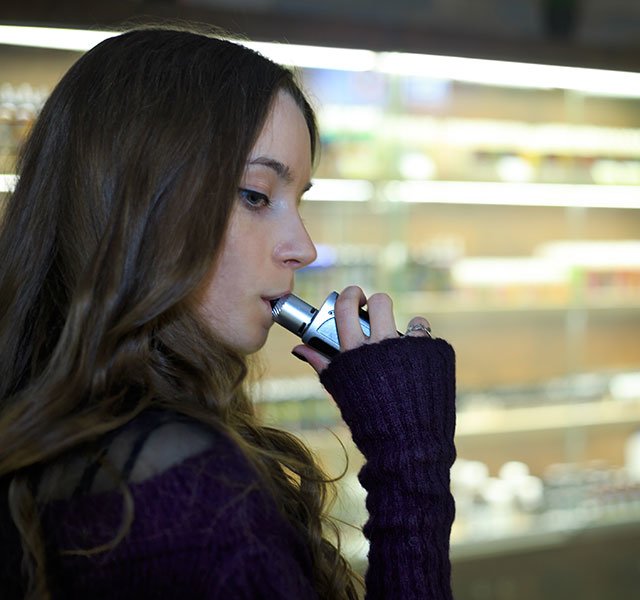As teen and young adults have become more aware of the dangers of tobacco use, smoking trends in the United States (among adults and teens) have been on the decline. Until recently. According to the Centers for Disease Control and Prevention (CDC), in 2019, about 25% of middle schoolers and 50% of high schoolers tried tobacco products.
So why the upward trend of adolescent tobacco use? Vaping products.
Many e-cigarette smokers and vape users believe vaping products are a safe alternative to other forms of tobacco use, like smoking, and can serve as a way to help people quit. According to Amanda Holm, MPH, who manages the tobacco treatment service at Henry Ford Health, the jury is still out on this.
“There’s been little evidence as of yet that vaping is an effective way to quit, especially compared with expert counseling and proven tobacco treatment medications,” Holm says. “I worry about how vaping might prolong or even strengthen nicotine addiction and make it more likely that people will relapse to cigarette smoking.”
Fast Facts About Vaping
There are many myths out there about safety of these products. Here, Holm shares a few critical facts about the dangers of vaping to counter the misconceptions:
- Vaping can be harder to quit than smoking traditional cigarettes. For example, one Juul pod is the nicotine equivalent of smoking a pack of 20 regular cigarettes.
- Vaping is highly addictive. Teens who vape are four times as likely to develop a nicotine addiction. Unregulated nicotine levels in these products make it easier to get addicted. “Unfortunately, we know from experience with cigarettes that the younger people start using nicotine, the more strongly addicted they tend to become,” Holm says.
- Vaping products are marketed to teens and young adults. Many young people are interested in vaping because products come in fruit or candy-like flavors.
- Vaping products aren’t FDA regulated. There are no uniform standards for the amount of nicotine or chemicals found in vape juice or pods. Some products have been shown to contain heavy metals, antifreeze, components of car exhaust or cancer-causing carcinogens in the aerosol clouds they produce.
- Vaping isn’t limited to tobacco or nicotine consumption. Many vaping devices can be modified so you can inhale alcohol or smoke marijuana as well.
- Vaping alcohol isn’t safer than drinking alcohol. Consuming alcohol through vaping devices can be the equivalent of taking several shots in a matter of a few seconds. This causes your blood alcohol levels to rise dangerously fast in comparison to normal alcohol consumption – and can result in alcohol poisoning or death.
Besides addiction and the risks outlined above, using these products can also lead to serious health effects, such as a weakened immune system or lasting lung damage.
Getting Help To Quit Vaping
If you or someone you know is looking to quit vaping, smoking or other forms of tobacco use, there are many resources available – through local and national organizations, by phone or online. If you can, talk to your doctor to explore what your options are for getting help.
“We know from decades of research that the best results come from the combination of expert counseling, and using FDA-approved medications,” Holm adds. “That’s why Tobacco Treatment Specialists, who really know how to prescribe and teach about behavior change and medications, provide the most effective support.”
Check out the Tobacco Treatment Service (TTS) and TTS for Teens at Henry Ford Health for more information about how to quit smoking or vaping.
To make an appointment with a doctor, visit henryford.com or call 1-800-HENRYFORD (436-7936).
Amanda Holm, MPH, is the project manager for the Tobacco Treatment Service in the Henry Ford Center for Health Promotion and Disease Prevention.



